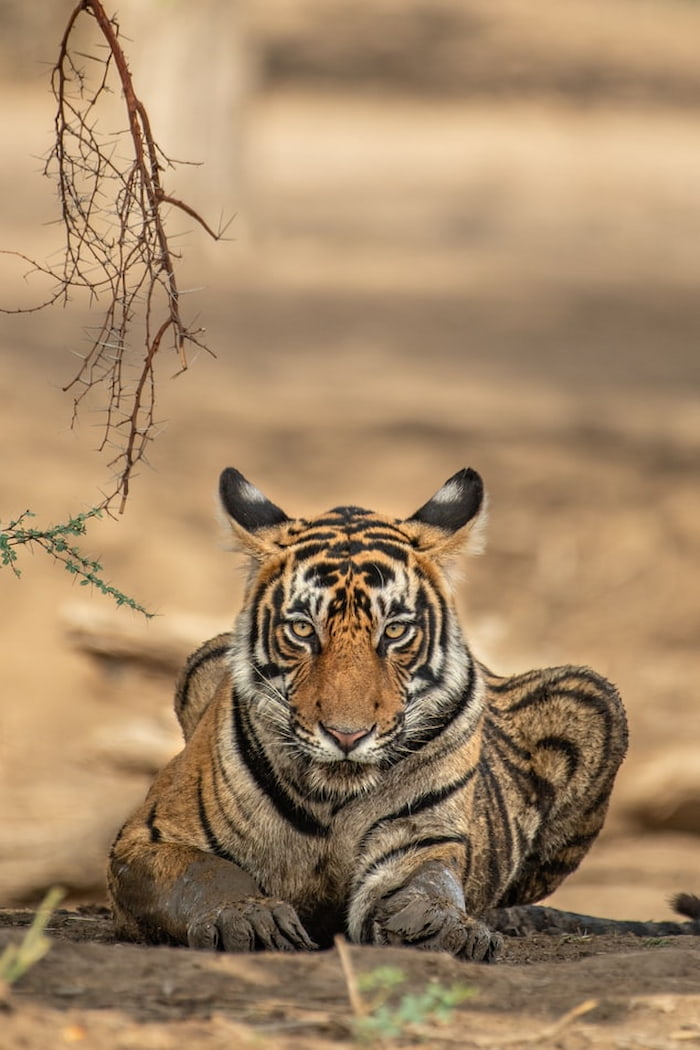There are six extant, or remaining, tiger species in the world (three are already extinct). Of these, the Indian Tiger, or Bengal Tiger, has the largest population. There are roughly 3000 tigers most of which are in India.
India is well known for its Royal Bengal Tigers, and tiger safaris, for most people, means visiting India. Many individual tigers have their own personal fans, from Macchli to Munna, and the Tiger Sighting is considered the main event of any. These majestic cats have served as inspiration for innumerable books, movies, and folk tales. But how much do you actually know about the king of the jungle?
Tiger Species
There are six extant, or remaining, tiger species in the world (three are already extinct). Of these, the Indian Tiger, or Bengal Tiger, has the largest population, most of which is in India. There are roughly 3000 tigers in India as per the latest census (a massive undertaking that won a spot in the Guinness Book of World Records for being the worlds largest wildlife survey that has been captured via camera). This has been growing over the last decade, from 1400 in 2006. They are widely distributed in India from sub-alpine areas in the North to the mangrove forests in the east, from the dry scrub forests in the west to the tropical forests of the south.

Tiger Behaviour and Ecology
Tigers live alone except for cubs, who stay with their mothers until they are between 1.5 to 2 years old. Cubs are raised almost entirely by their mothers, except for a few rare exceptions. Once old enough, they set out to establish their own territories. Female cubs might be given part of the mother’s territory, but males are driven away – to prevent inbreeding. Females start breeding around the age of 3 years and have between one to 4 cubs per litter. The mother will not have any litters until the previous litter has ‘dispersed’ once they are old enough. For this reason, new male tigers entering the territory may try to kill cubs so that the female is ready to breed again, so he can father her next litter. Territorial clashes can thus lead to higher cub mortality.

Tiger Conservation
While tiger conservation has in the past been exclusionary to tribal people and forest dwellers, who are relocated from their ancestral lands to create protected areas, efforts are being made to make conservation more inclusive, by involving local people in conservation, encouraging ‘community reserves’ managed by local communities, and through eco-tourism providing employment opportunities for locals.
Tiger Reserves in India

Tiger Safaris
1. Corbett Tiger Reserve, Uttarakhand
2. Tadoba Tiger Reserve, Maharashtra
3. Kanha Tiger Reserve, Madhya Pradesh
4. Bandhavgarh Tiger Reserve, Madhya Pradesh
5. Ranthambore National park, Rajasthan
Other notable places are Pench, Satpura, Sariska, and Periyar.
Books About Tigers:
Tigers are fascinating, majestic creatures, and there is a lot to understand about them. Some books to learn more about tigers in the wild:
1. Just Tigers, by Jim Corbett
2. Tiger Moon: Tracking the Great Cats in Nepal, by Fiona Sunquist
3. The Deer and the Tiger, by George Schaller
4. The Way Of The Tiger, Natural History And Conservation Of The Endangered Big Cat, By Ullas Karanth
5. Land of the Tiger, by Valmik Thapar
6. Second Nature: Saving Tiger Landscapes In The Twenty-First Century, By Sanjay Gubbi.
Some of these books are of a more scientific nature, like Schaller’s and Karanth’s, delving deep into tiger ecology and conservation, while Corbett’s more personal stories have inspired legions of conservationists over the decades. Hopefully you will find something to inspire you to set off for your next safari!
Shop for a cause
Shop on amazon.com | amazon.co.uk


